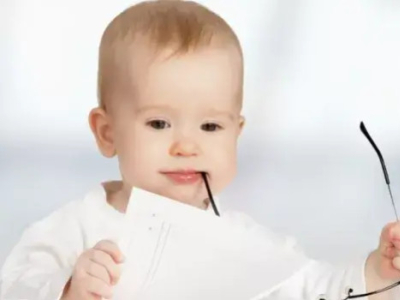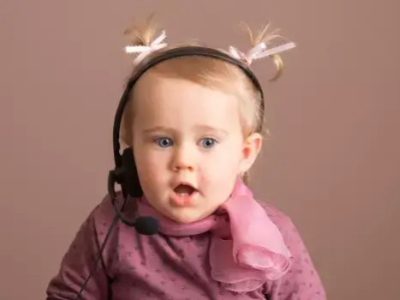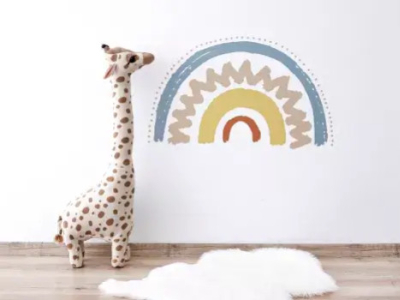
Sign Language With Baby
How to communicate with your child as long as he does not speak. Thanks to sign language, you will be able to interact with him, understand him and make him understand things more easily.

Note: everyone speaks sign language. Adults nod and talk with hands, babies wave goodbye, nod yes. Children sign spontaneously. For example, from 8 months, they point, and it's already gestural communication.
Who thought to use signs with baby?
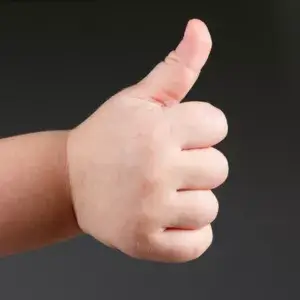
Surprising idea at first sight!
Indeed, we wrongly think that the use of sign language is reserved for people with hearing impairments.
It was in the United States in the 1970s that sign language was first used with children. Pretty clever! The child has needs and comments to communicate long before he is able to do so with speech.
Sign language makes it possible to exploit this period of development of communication intentions by equipping it with a means of expression that is more accessible to it. For the greatest number, this means of communication will support the child's expression and understanding temporarily for a short period.
Why invest time to learn the signs with my child?
Cela va faciliter la communication et les interactions dans un moment clé de la vie de l’enfant où il a des intentions à transmettre et qu’il a la capacité à reproduire des signes pour s'exprimer alors qu’il se trouve limité par la parole.
Ceci aura pour effet de donner confiance à l’enfant dans la découverte de son pouvoir de communication.
Au cours des 10 dernières années, l’utilisation des signes avec les bébés a pris de l’ampleur en Europe. Le plus souvent, l’utilisation des signes sera un moyen d’expression très temporaire … cependant cela sera efficace et aura des impacts positifs sur ses interactions. La Langue des Signes aidera, selon des études, bébé à parler plus vite et réduira la frustration.

A solution for the two-year crisis?
It is certainly the crisis of opposition also called the “terrible two”.
Transition phase between very early childhood when baby is totally dependent of you and childhood. Your child builds his identity by learning the “I” and by resisting your requests by the massive use of the “no”.
No! Baby does not want to eat this dish anymore which he usually adores and finds it a good reason to spread his meal on the floor (or wall). No!, baby does not want to sleep and prefers to roll on the floor and bang his head on the floor. A kind of early adolescence. But your baby who wants to be a big one has neither the brain maturity to manage his emotions nor the words to express what he feels.
Sign language is a solution for the crisis of 2 years and can help him while bringing you support for this crucial stage of development.
Expressing helps the child to release the excess of emotions and to take hindsight, whether through verbal language or sign language. By teaching him to figure his anger, for example, you help him not to push, bite or hit a friend who takes a toy from him. If baby knows the sign that represents frustration, he can tell you about it at instead of screaming or smashing his toys when you refuse him a cake before the meal.
A stronger bond!

Speech does not really appear until between 2 and a half and 3 years old, so we can communicate with him by signing up to this age. It is an alternative means of expression which in no way prevents him from developing his oral communication (we always pronounce the word with the associated sign). But this sign language makes it possible to avoid frustration on the side of parents and children when it is difficult to understand each other, such as when a child is crying. Sometimes parents want their children to talk so much that it ends up stopping them. The sign helps to become more patient since we already have a first mode of exchange. We thus create a stronger bond with him by putting ourselves at his level, in his field of vision in order to better capture his attention. In this way, we also realize that babies have a much earlier understanding than we imagine.
How to sign with your baby?
When you sign with your child, it is important to always combine three elements: the concept, the word and the sign. More and more nurseries and childminders also practice the language baby signs. If this is the case for you, discuss together in order to coordinate to use the same signs.

4 basic signs
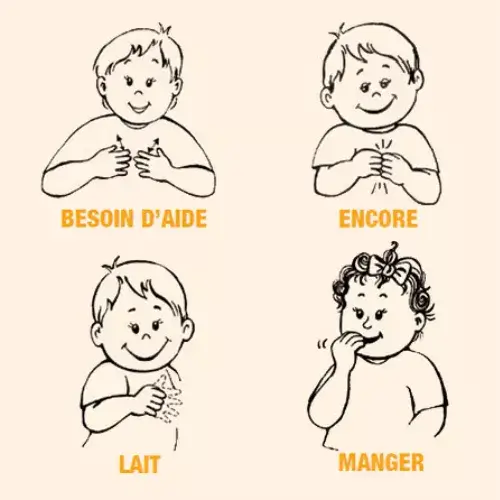
Here are some everyday words and the signs that represent them.
